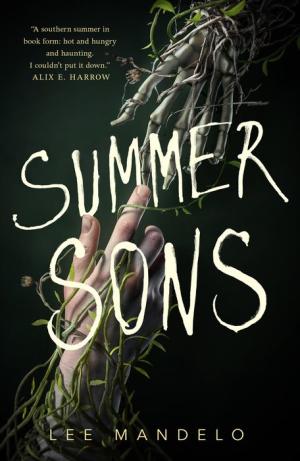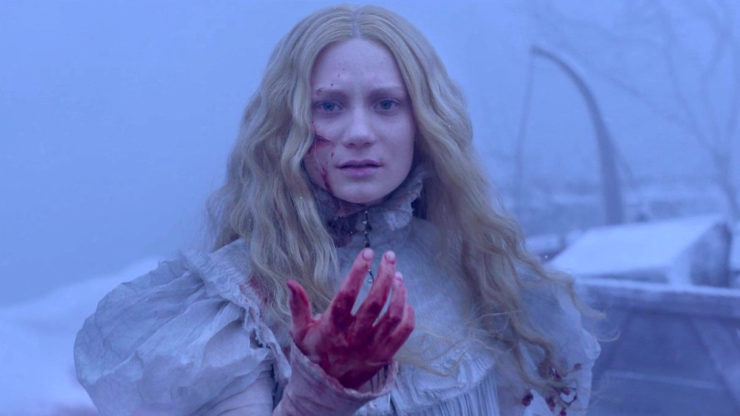It starts with a tragedy.
A murder. A betrayal. A loss. Perhaps a secret is taken to the grave and begins to fester there; perhaps a heart is broken and never quite repaired. The archetypal madwoman in the attic outstays her welcome and continues to haunt the space long after her heart has stopped beating. “Some say you can hear her heartbeat in the house’s walls,” an errant maid might whisper to the house’s newest occupants; or, “You can see her sometimes, wandering the halls at night.”
This is the conceit of the Gothic house: a person, a presence, who becomes so attached to their place of residence that, for better or worse, they cannot bear to leave.
Sometimes this figure is a ghost—a murder victim, perhaps, waiting for justice or attempting to warn the naïve protagonist away. Sometimes, the spirit is malevolent: I think of Rebecca, the titular character from Daphne du Maurier’s 1938 classic, whose presence lingers on the Manderley estate to torment her husband’s young new bride. Sometimes the ‘ghost’ is very much alive, yet their presence haunts the house regardless. I think here of the chilling Mrs Danvers—the menacing housekeeper from Rebecca—who is so firmly set in her routine about Manderley that she becomes almost a mouthpiece for its secrets.
Rebecca herself is more of a figurative ghost than a literal one—brought to life by the anxieties of the novel’s narrator—but there is something stain-like about her persistent presence, as though she does not wish for her widower to move on and forget her. Likewise, Mrs Danvers’ strict adherence to the routines of the past can be read as a deeply unhealthy manifestation of her grief. You can easily imagine the housekeeper’s soul lingering in the house after death, grimly going through the motions as she did in life.
These ghosts are far too anchored in the past to move on. The classic Gothic house serves as an ideal dock; the last familiar fixture in a world which is rapidly shifting. In other words, it could be said that a fear of change is the fuel, the psychic nourishment that allow horrors to grow and take over…
In Helen Oyeyemi’s strange, dark Gothic, White is for Witching, we see this symbiotic relationship emerge between protagonist Miri and her family’s old hotel. While alive, Miri exists in a state of ethereal bizarreness, feasting on chalk and drifting from here to there in a haze of rose attar. There is a palpable sense that she is a ghost waiting to happen. Interestingly, the house itself narrates a quarter of this novel—a decision that allows Oyeyemi to explore the Gothic from an unsettling new angle. Like Miri herself, who fears drifting apart from her twin brother and is still reeling from the shock of their mother’s recent death, the house is also deeply afraid of change. It doesn’t want to let Miri go.
Another example of the relationship between haunter and house can be found in Shirley Jackson’s brilliant final work, We Have Always Lived In the Castle. A slip of a book, at less than 200 pages, this 1960s Gothic staple follows sisters Merricat and Constance about their weekly routine in their ancestral home, which they inhabit following the murder of their family. Told from Merricat’s perspective, the story explores her resistance to change even when it seems inevitable. With every attempt the plot makes to foist new realities on her, she doubles down on her insistence that things remain exactly as they were—taking steadily more drastic measures to ensure that neither she nor Constance can ever leave.
Buy the Book


Summer Sons
The opposite of change—in many cases—is stagnation, so it’s no wonder that the haunted house motif is so often characterised by decay.
Angela Carter’s short story, The Lady of the House of Love—collected in The Bloody Chamber and Other Stories—retells the tale of Sleeping Beauty as that of a vampire trapped in an endless cycle of history she is doomed to repeat. The protagonist languishes amongst the ruins of that which was once beautiful, wearing her mother’s soiled wedding gown, and kills every visitor despite her loneliness. Why? Because that’s just what vampires do. The familiar narrative of waking the Sleeping Beauty from her slumber becomes, in this tale, something of an exorcism.
Likewise, in Jane Healey’s The Animals at Lockwood Manor—which uses a quote from Carter’s story in its epigraph—there is a link between the manor’s gradual ruination and the horror of unresolved past events which took place there. One problem cannot be solved without first addressing the other.
The haunted house makes many an appearance in cinema, too. One shining example is Guillermo del Toro’s fabulous Crimson Peak. Heavily influenced by the literary tradition of Gothic romance, this film takes conventions of the haunted house and exemplifies them beautifully. The old manor in this tale—Allerdale Hall—was built on grounds rich in red clay, which eerily resembles the blood of the women murdered there. As the story progresses, this clay discolours the snow on the hilltop—earning the estate its ominous moniker of “Crimson Peak”—and oozes up through the floorboards of the house. At the same time, protagonist Edith begins to understand just how terrible the building’s history is. Lucille Sharpe—the story’s villain—becomes a part of the house even as she lives, with architectural motifs sewn into the lacework of her costumes. The film is also well-populated with literal ghosts: skeletonised wisps which are both beautiful and frightening to look at.
There are countless other Gothic tales which deserve to be mentioned here. Edgar Allan Poe’s “The Tell-tale Heart” merges murder victim with the structure of the building itself in the form of a heartbeat felt through the floorboards; Poe also constructed “The Fall of the House of Usher” around a cracked and crumbling Gothic “mansion of doom” filled with secrets and madness. Charlotte Perkins Gilman’s The Yellow Wallpaper draws its horror from the monotony of entrapment within one small room. And of course, Neil Gaiman’s middle-grade horror novel Coraline does a beautiful job of nestling darkness within the geography of a house.
The image of the haunted house is one which has captivated the human imagination for centuries. There is something seductive about watching the narrative of our fears play out before our eyes in an environment where we ourselves are untouched by the consequences. We fear change, and so we seek out stories about characters who fear it too. These characters rage, scream, dig in their heels…despite all resistance, change is inevitable. Rot creeps into the places which refuse to grow, and—when left to moulder and decay—the barriers between house and inhabitant start to thin. Our characters cling to their surroundings until all that makes them a part of the world falls away; until their grip is all that remains. They become the thing that haunts the house.
And in doing so, they teach us valuable lessons about what it is to evolve, reminding us that we must take the frightening step into the future in order to free ourselves from our own haunted houses.
Holly Kybett Smith is a femme lesbian writer based in the south of England. A keen lover of historical and speculative fiction, she specialises in all things dark, whimsical and weird. Her work has been featured in Issue #2 of the New Gothic Review. Find her on Twitter: @h_kybettsmith.










